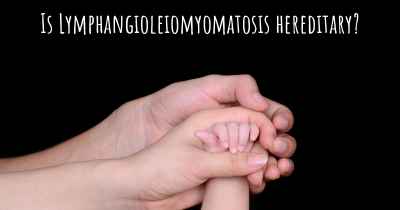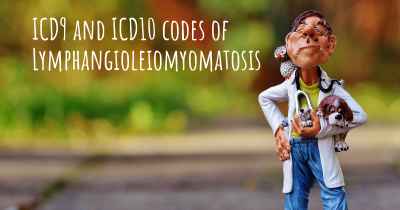What is the history of Lymphangioleiomyomatosis?
When was Lymphangioleiomyomatosis discovered? What is the story of this discovery? Was it coincidence or not?

Lymphangioleiomyomatosis (LAM) is a rare, progressive lung disease that primarily affects women of childbearing age. It is characterized by the abnormal growth of smooth muscle cells, called LAM cells, in the lungs, lymphatic system, and other organs. LAM was first described in the medical literature in the late 19th century, but it wasn't until the 20th century that significant advancements were made in understanding the disease.
The early history of LAM:
The first documented case of LAM was reported in 1887 by Dr. Edward H. Williams, an English physician. He described a patient with diffuse tumors in the lungs and lymph nodes, which he referred to as "lymphangioma." However, it wasn't until the 20th century that the disease gained more recognition.
Advancements in the mid-20th century:
In the 1950s, Dr. William D. Castle, an American physician, made significant contributions to the understanding of LAM. He recognized the association between LAM and tuberous sclerosis complex (TSC), a genetic disorder characterized by the growth of noncancerous tumors in various organs. Dr. Castle proposed that LAM was a manifestation of TSC, which was later confirmed by genetic studies.
During the 1960s and 1970s, researchers began to investigate the cellular characteristics of LAM. They discovered that LAM cells were derived from smooth muscle cells and had a unique appearance under the microscope. This led to the development of diagnostic criteria for LAM based on the presence of LAM cells in lung tissue samples.
Identification of the LAM gene:
In the 1990s, researchers made a major breakthrough in understanding the genetic basis of LAM. They identified mutations in the TSC1 and TSC2 genes as the underlying cause of LAM. These genes are involved in regulating cell growth and proliferation. The discovery of the LAM gene mutations provided valuable insights into the molecular mechanisms of the disease.
Advancements in treatment:
Over the past few decades, significant progress has been made in the treatment of LAM. In the 1990s, the drug sirolimus (also known as rapamycin) was found to be effective in reducing the size of LAM tumors and improving lung function. Sirolimus is an immunosuppressant that inhibits the abnormal growth of LAM cells.
In 2015, the U.S. Food and Drug Administration (FDA) approved sirolimus for the treatment of LAM based on the results of clinical trials. This marked a major milestone in the management of the disease.
Ongoing research and future prospects:
Despite the advancements in understanding and treating LAM, there is still much to learn about the disease. Ongoing research aims to further elucidate the molecular mechanisms of LAM and identify new therapeutic targets.
Additionally, researchers are investigating the potential role of hormonal factors in the development and progression of LAM, as the disease primarily affects women of childbearing age. Understanding these factors may lead to the development of novel treatment approaches.
In conclusion, Lymphangioleiomyomatosis (LAM) is a rare lung disease that has been studied for over a century. Significant advancements have been made in understanding the disease, including the identification of the LAM gene mutations and the development of targeted therapies. Ongoing research continues to expand our knowledge of LAM and may lead to further improvements in its management.








